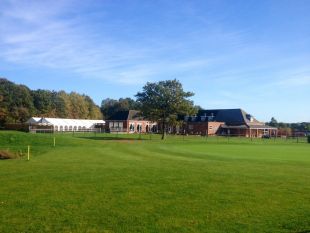Buckinghamshire
Let us help you plan your ideal vacation in Buckinghamshire...
One of the "Home Counties", 'leafy' Buckinghamshire lies precariously close to London yet offers the traveller the curious contradiction of industrial bustle and delicate, time-worn countryside.
Away from urban centres, you will find a remarkable selection of great houses, lavish woodlands and unexpected encounters with thatched cottages, old abbeys and ancient, history-laden churches. As a bonus, this region has a long and illustrious association with many famous names, from William Penn, founder of Pennsylvania, and one-time Prime Minister Benjamin Disraeli to the poets John Milton – who came here to escape the plague - and Percy Bysshe Shelley.
The county dates back to the 12th century but had been part of the 6th century kingdom of Mercia. The area around Aylesbury, however, is known to have habitation dating back at least as far as 1,500BC, which is why the region has a wealth of pre-Roman earthworks as well as the outlines of a castle built by Cunobelinus, legendary king of the Britons. One of the great battles mentioned in the Anglo-Saxon Chronicles took place at Chearsley. The Romans left their own road-building legacy in the form of Watling Street and Akeman Street.
The royal land-grabber Henry Vlll turned Aylesbury into the county town as part of his seduction of Anne Boleyn while a few years later the ultimate pilgrim, William Penn, left the Buckinghamshire village of Penn to found the US state of Pennsylvania.
The county possesses one of the most important places in modern history, Bletchley Park, featured in the recent film Enigma, the war-time base for Britain's code-breakers in their secret war against Germany; a house that also gave the mathematician Alan Turing the opportunity to pioneer the use of electronic 'computing'.
In the south of the county lie the splendid, ramble-woven Chiltern Hills with their chalk beds and famous beech woods. In the summer months they come alive to the song of the nightingale. In the north is the magnificent Vale of Aylesbury which possesses some of the richest agricultural land in the Britain.
The majestic Grand Union Canal cuts across the northeast edge of Buckinghamshire en route to Birmingham and is another magnet for tourists. Despite the growth of industry and suburbia, a number of towns and villages have managed to hold on to their traditional charm and there are many evocative old buildings and river bridges to draw the visitor's attention.
The Industrial Revolution introduced the county to a series of important industries, including lace and paper-making, and it was during this time that the Rothschild banking family moved in to stamp their own character on the landscape, buying or building large houses and estates. These included Ascott House, Aston Clinton House, Eythorpe, Halton House, Mentore Towers and Waddesdon Manor.
Many other great houses live here, too. Loseley House was built in 1562 from stone taken from Waverley Abbey and contains panelling from Henry Vlll's now-vanished Nonsuch Palace. Its royal guests included both Elizabeth 1 and James 1. Hughenden Manor was the Victorian home of Benjamin Disraeli while the Italiante mansion Cliveden was the home of two dukes before it passed into the hands of the Astors.
Less grand but equally enthralling is the cottage – now a museum - that was inhabited by the poet John Milton in the lovely old village of Chalfont St Giles. Milton was old and blind when he came here to escape from the London plague, but he still managed to finish his 'Paradise Lost' and begin his 'Paradise Regained'. If that's not enough to tempt you to Buckinghamshire, perhaps a visit to West Wycombe Park will suffice. This was the home of the comical Sir Francis Dashwood and the bizarre "Hell Fire Club".
Read More












